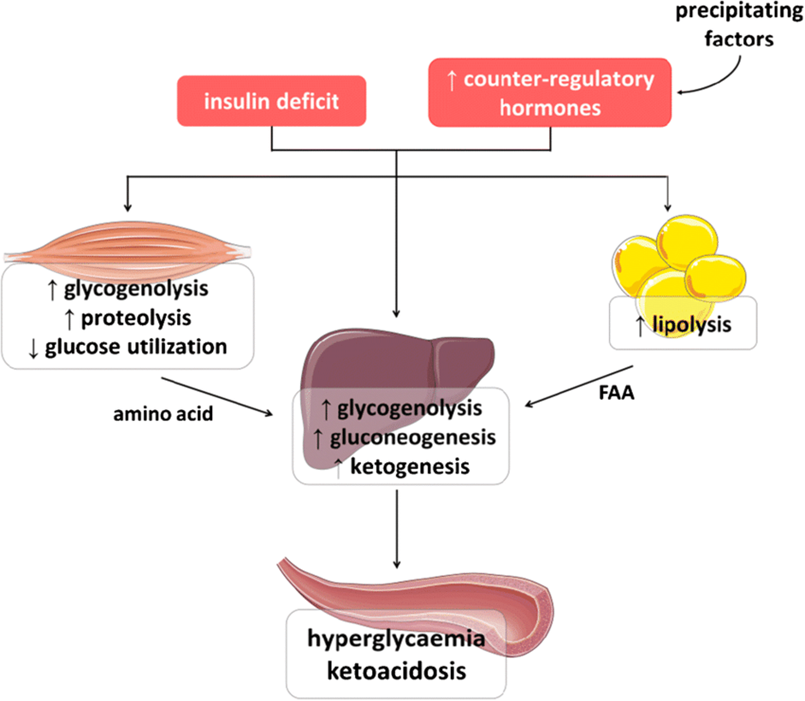A nasal spray of desmopressin acetate (DDAVP) is used to treat which endocrine disorder of the pituitary gland?
Diabetes insipidus
Acute adrenocortical insufficiency
Hypopituitarism
Syndrome of inappropriate antidiuretic hormone
The Correct Answer is A
Choice A reason:
Diabetes insipidus: Desmopressin acetate (DDAVP) is primarily used to treat central diabetes insipidus, a condition where the body lacks sufficient antidiuretic hormone (ADH) due to issues with the pituitary gland or hypothalamus. This hormone helps regulate water balance in the body, and desmopressin acts as a synthetic replacement to reduce frequent urination and excessive thirst.
Choice B Reason:
Acute adrenocortical insufficiency: This condition, also known as Addison’s disease, involves insufficient production of cortisol and aldosterone by the adrenal glands. Desmopressin is not used to treat this condition as it does not address the hormonal deficiencies involved.
Choice C Reason:
Hypopituitarism: This condition involves the underproduction of one or more hormones by the pituitary gland. While desmopressin can be used to manage specific symptoms related to ADH deficiency, it is not a comprehensive treatment for hypopituitarism, which requires hormone replacement therapy for multiple hormones.
Choice D Reason:
Syndrome of inappropriate antidiuretic hormone (SIADH): SIADH is characterized by excessive release of ADH, leading to water retention and hyponatremia. Desmopressin is not used to treat SIADH; in fact, it would exacerbate the condition by increasing ADH levels.
Nursing Test Bank
Naxlex Comprehensive Predictor Exams
Related Questions
Correct Answer is C
Explanation
Choice A reason:
Extracellular hyperglycemia refers to high blood sugar levels outside the cells. While hyperglycemia is a common feature of diabetic ketoacidosis (DKA), it is not the direct cause of the condition. DKA occurs when the body cannot use glucose for energy due to a lack of insulin, leading to the breakdown of fat and protein for energy, which produces ketones and causes acidosis.
Choice B Reason:
Hypoglycemia, or low blood sugar, is not associated with diabetic ketoacidosis. In fact, DKA is characterized by high blood sugar levels. Hypoglycemia is a separate condition that can occur in individuals with diabetes, particularly if they take too much insulin or skip meals.
Choice C Reason:
The use of fat and protein as an energy source is the primary mechanism behind diabetic ketoacidosis. When insulin is deficient, the body cannot utilize glucose for energy. As a result, it breaks down fat and protein to produce energy. This process generates ketones, which are acidic and lead to the development of ketoacidosis.

Choice D Reason:
Increased cellular metabolism of glucose is not related to diabetic ketoacidosis. In DKA, the problem is that cells cannot use glucose effectively due to a lack of insulin. Instead, the body resorts to breaking down fat and protein for energy, leading to the production of ketones and acidosis.
Correct Answer is C
Explanation
The correct answer is c. An excessive destruction of platelets.
Choice A: Diffuse fibrin deposition in the microvasculature
Diffuse fibrin deposition in the microvasculature is not characteristic of immune thrombocytopenia (ITP). This description is more aligned with disseminated intravascular coagulation (DIC), a condition where widespread clotting occurs within the blood vessels, leading to multiple organ damage.
Choice B: Deficiency in the production rate of globin chains
A deficiency in the production rate of globin chains is associated with thalassemia, a genetic blood disorder that affects the production of hemoglobin. This is not related to the pathology of immune thrombocytopenia.
Choice C: An excessive destruction of platelets
An excessive destruction of platelets is the hallmark of immune thrombocytopenia (ITP). In ITP, the immune system mistakenly targets and destroys platelets, which are essential for blood clotting. This leads to a low platelet count and an increased risk of bleeding.
Choice D: Bone marrow failure in which all elements are suppressed
Bone marrow failure in which all elements are suppressed is characteristic of aplastic anemia, a condition where the bone marrow fails to produce sufficient blood cells. This is not related to immune thrombocytopenia.
Whether you are a student looking to ace your exams or a practicing nurse seeking to enhance your expertise , our nursing education contents will empower you with the confidence and competence to make a difference in the lives of patients and become a respected leader in the healthcare field.
Visit Naxlex, invest in your future and unlock endless possibilities with our unparalleled nursing education contents today
Report Wrong Answer on the Current Question
Do you disagree with the answer? If yes, what is your expected answer? Explain.
Kindly be descriptive with the issue you are facing.
